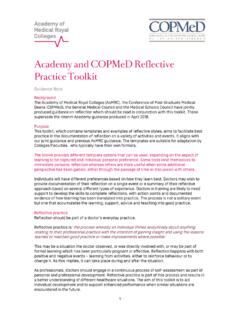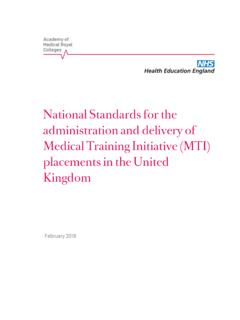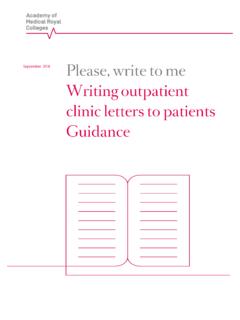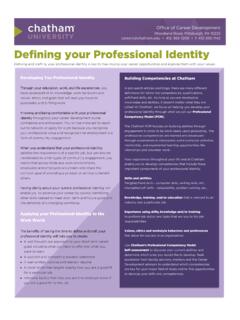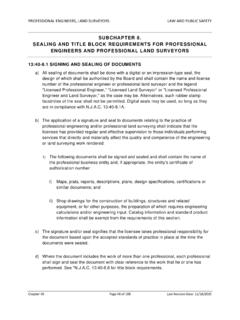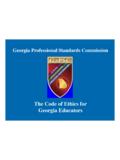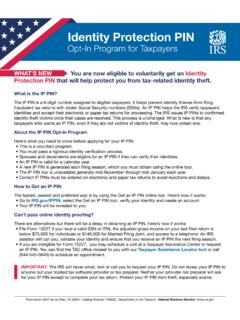Transcription of Developing professional identity in multi-professional teams
1 Developing professional identity in multi-professional teamsMay / 20202 Academy of Medical Royal CollegesDeveloping professional identityForewordExecutive summaryIntroductionWhat is professional identity and why is it important?Definitions and models of team-working Changing roles and responsibilitiesEffective team-working Celebrating diversity and differenceEducation and trainingCPD, supervision, mentoring and appraisalConclusionPrinciples for promoting identity development in multi-professional teamsResourcesAcknowledgementsReferences 3457912172124273031 32 33 36 Contents3 Academy of Medical Royal CollegesDeveloping professional identityDelivery of healthcare has been transformed over the past few years in order to meet increasing demand and to improve patient care and experience. This has largely been achieved through better use of the entire workforce which has been enabled through broader training and a more flexible approach.
2 In essence, traditional professional boundaries have been stretched so that patients can benefit from a broader, more diffuse, skilled team. However, it is not simply doing more to achieve more this approach has improved job satisfaction, stimulated career development, allowed everyone to work to their maximum potential, promoted interpersonal relationships and enhanced retention of staff. The total benefits amount to considerably more than the sum of the individual advantages of being a member of a specific profession are also tangible, however; the sense of belonging and professional identity this brings must not be lost within the multidisciplinary team. Each member contributes their own particular skill set which commonly has been optimised and enhanced to deliver within specific clinical settings. Individual professional development is exciting and rewarding.
3 The opposite side of that coin is professional protectionism others delivering activities considered within the domain of a specific professional group may be seen as threatening and can cause conflict if not recognised and addressed properly. The balance between identity and protectionism can be fine, but what is vital for success is that each member is encouraged and enabled to contribute as part of a group that fully respects each other s roles and abilities. This is happening at pace across all healthcare professions at all value of multi-professional work has been fully exemplified in the rapid advances that have occurred during the COVID-19 pandemic and this document will be invaluable in Developing this further in the future world of endemic Carrie MacEwen Chair, Academy of Medical Royal CollegesForeword4 Academy of Medical Royal CollegesDeveloping professional identityIn health and care settings, a strong and confident professional identity has been linked to staff wellbeing, clinical practice and patient care.
4 To maintain these benefits, however, one s professional identity must be flexible and able to withstand changes in the professional environment it must be able to adapt to new ways of guidance offers advice on how professional identities can flourish in multi-professional teams , looking at both individual and team identities. We set out how professional identities are formed and why they are important for health and care staff. We then consider how individuals work in different models of teams and the varying ways in which they interact with staff from other occupational and professional groups. The guidance recognises the importance of individual professional affinity while acknowledging the risks of protectionism. We have identified five key themes which are explored in this guidance: How changing roles and responsibilities should be communicated and understood The principles that underpin effective team-working, which enable individuals and teams to thrive and deliver the best care for patients The importance of celebrating diversity and difference and resisting protectionism and silo-working, which involves creating a supportive culture, promoting respect for the contribution of others, and resolving conflict effectively How interprofessional education and training can enhance professional identity formation and team-working skills at the outset of medical and healthcare careers The ongoing role of CPD, supervision.
5 Mentoring and appraisal in stimulating a culture of shared learning and a supportive and self-reflective the guidance we include case studies of multi-professional team-working taken from different health and care settings. They provide examples of initiatives and schemes that enhance the development of individual and team identities, that readers may wish to replicate in their own workplaces. These case studies also reflect on some of the challenges that need to be overcome to embed new ways of working and highlight successful strategies and approaches. The guidance then identifies ten key principles for promoting identity development in multi-professional teams that can be used across different health and care contexts. The purpose of this guidance is to help individuals build pride and confidence in their own professional identity including the values, skills, and attributes they bring to a team while Developing shared identities with colleagues from across different professional groups.
6 Executive summary 5 Academy of Medical Royal CollegesDeveloping professional identityEffective team-working is essential for the delivery of patient-centred care. With an ageing population, a rise in comorbidities and increased specialisation of healthcare, patients need a holistic, team-based approach. This requires practitioners from different clinical professional backgrounds working together and adapting to new models of care. The NHS and social care workforces are already multi-professional in character, comprising groups ranging from doctors to nurses, pharmacists to psychologists and social workers to optometrists. The 14 different allied health professions a diverse group ranging from music therapists to paramedics make up the third largest workforce in the NHS and there are over 50 separate specialisms amongst healthcare scientists.
7 Of course, the healthcare workforce also comprises crucial non-clinical staff who contribute to the successful delivery of time, tasks that were traditionally the preserve of one clinical group, often doctors, have become the responsibility of other members of the team. Non-medical prescribing the extension of prescribing rights to some other healthcare professionals is a well-established part of multi-professional working which has helped to share clinical responsibility. More recently, the Medical Associate Professions (MAPs) comprising physician associates (PAs), surgical care practitioners, and anaesthesia associates have grown rapidly. In 2018 there were around 600 qualified PAs in the UK; 1 the Interim NHS People Plan anticipates that there will be over 2,800 PA graduates by the end of teams are at the centre of health policy across the UK.
8 NHS England's GP five-year contract framework (launched in 2019) supports Primary Care Networks to recruit up to 20,000 additional staff, including clinical pharmacists, PAs, physiotherapists, community paramedics, and social prescribing link workers. The Interim People Plan, meanwhile, was developed on the basis that multi-professional clinical teams will be the foundation of the future workforce , a conscious shift away from treating the workforce as a group of separate professions . NHS Scotland s 2020 workforce vision Everyone Matters sets out the importance of putting new and extended roles into practice , while multidisciplinary primary care teams are central to the Health and Wellbeing 2026 Delivering Together roadmap in Northern COVID-19 outbreak and response have demonstrated the importance of multi-professional working amid unparalleled service pressures.
9 "There are no more surgeons, urologists, orthopaedists we are only doctors who suddenly become part of a single team to face this tsunami that has overwhelmed us," pronounced Italian doctor Daniele Macchini. These words resonated with health teams internationally and were used as a strapline across workforce deployment plans and briefings in the NHS. The Academy of Medical Royal Colleges (Academy) Principles for reintroducting healthcare services COVID-19 highlights, amongst other things, the need for updated ways of working that rely heavily on the developed, team-based Academy previously set out in a joint statement with other professions that the diversification and expansion of roles is essential for the delivery of twenty-first-century care and that new ways of working are dependent on the highest standards of professional education and training being maintained.
10 Effective multi-professional team-working requires mutual respect and collaboration, without protectionism of specific practices or roles leading to the associated perpetuation of silos. We need a culture change that ensures all members of the multi-professional team are utilised flexibly and effectively and are supported in their practice and in their professional development. All health and care professionals should be enabled to work to their full potential. Introduction6 Academy of Medical Royal CollegesDeveloping professional identityThere is a wealth of literature on and resources to support effective multi-professional team-working (see Resources). Building on this, the Academy has developed this guidance to support those working in health and social care to consider how they can nurture and develop their own professional identities and those of their colleagues, while working within and across multi-professional teams .


